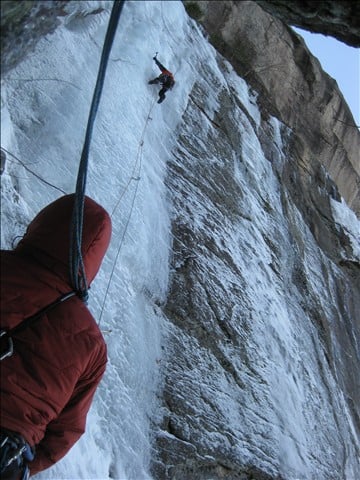What does it take to summit a 10,781 foot mountain? And how do you do it if everyone said you couldn't?
Sara looked weak to me. My first thought was this was going to be another trip up Mt. Baker were I would have to turn around the team early and fore go the summit. But Sara was full of surprises. She came to our guide service accompanied by her high school friends, to prove a point.
Sara was a Type I, insulin-dependent diabetic who had been told (falsely) by her doctor that she couldn’t participate in athletic endurance events like mountain climbing. When she finally received better and truthful medical advice, she made it her goal to train hard and climb Mt. Baker in Washington State, a glaciated, active volcano replete with the challenges of altitude, cold weather, icy crevasses and avalanches.
Frequent Stops and Worry
Any climb up Mt. Baker is a difficult one. Ours began on its southern flank, a long hike in to our base camp which included climbing up a loose and unstable lateral moraine called the railroad grade (named for its almost perfect 8% incline). Sara and her friends hiked well, if not slowly; it worried me that on summit day, we might only make it halfway up because it's typically a 5-hour climb. The journey was compounded by frequent stops; although Sara did train hard, she still had to overcome years of bad advice and a mostly sedentary lifestyle.
Sara also needed the many stops to keep her insulin levels at just the right amount, not too high and not too low. Because she was burning a lot more calories than she typically would, these breaks were used to manage her blood sugar by eating lots of snacks (which, it turns out, is good mountaineering style anyway).
We set camp up at snowline just above the trees and practiced skills for the next couple days. We slid down snow with ice axe in hand practicing to arrest our own falls. We lowered into crevasses and pulled each other out to practice rescue techniques and we explored ice falls to hone our climbing footwork. Sara picked up these skills quickly and often assisted her friends in learning them as well.
When summit day came, I woke up the group at the ungodly hour of 11 p.m., wanting to keep crevasse bridges frozen, avalanche slopes stable, and give ourselves enough time for the climb. Weary-eyed and nervous, Sara strapped her crampons on, roped up and began kick-stepping and plunging her axe into the snowfield to gain upward progress.
The Roman Wall

By the time we made the crater, which was still 1000 feet from the summit we had already been on the go for 8 hours. The steepest portion -- the Roman Wall, a shield of 45 degree ice -- still lay ahead.
Typically I would have turned the team around at this point, but the weather was holding and I could see in Sara a fiery determination that warranted a final push up the Roman Wall. We skirted a few gaping crevasses on the left and then the right, keeping the rope taught until we eventually gained the summit plateau . . . 16 hours after leaving camp!
Getting High On Success
We shared hugs and tears on the summit, snapped a couple photos and then quickly began to descend. We all walked away knowing that what was possible was a little bit more than we had originally thought.
I try and take the inspiration and knowledge I gained from watching Sara climb with me everywhere I go. Her ascent is a constant reminder that we are limited only by our imagination. I’ve never known happiness could be so dignified.